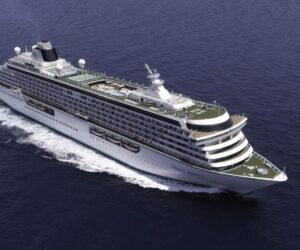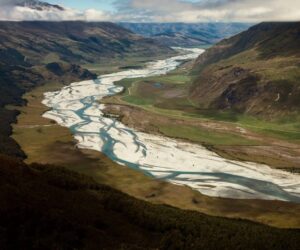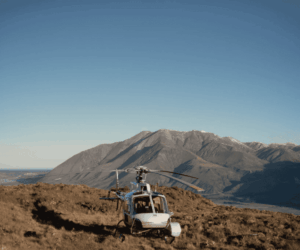The Best Hiking Trails Within an Hour of Minneapolis-St. Paul
Andrew.Parks
Thu, 08/08/2024 – 06:48
Doesn’t it just seem unfair that Minnesotans not only have two world-class cities within a stone’s throw of each other, but also that we can escape them both and be in the woods, surrounded by prairie, or lounging lakeside in mere minutes?
There are countless — countless! — wonderful trails in the metro area. Here are some of our favorite parks, loops and paths, all located within an hour’s drive from Minneapolis and St. Paul.
What To Read Next
How KARE 11 Anchor Jana Shortal Celebrates Minnesota Pride
Read More
Take a Wine, Beer & Spirits Tour from Wayzata to Waconia
Read More
10 Spots to Savor Minnesota’s Sweetest Treats
Read More
Get help from the experts to plan your trip
Want to know the best spots in Minnesota? How about tips on how to make the most of your time in a specific city? Our Minnesota experts can answer your questions, offer advice, or plan the perfect Minnesota trip for you. For free.
Outdoor Adventures
Hiking
Article
Ever Meister

An overlook at Afton State Park
/ Melanie Graves
Afton State Park | Hastings
The St. Croix River might not have the same big-name appeal as the Mississippi, but some of the loveliest rugged views in the area can be seen from trails along the sandstone bluffs. Afton State Park’s trail network also may have you exploring a ravine, walking through a peaceful prairie, or forest bathing among hardwoods and pine.
Newer hikers and young explorers will appreciate the flat, crushed gravel of the North River Trail (1.2 miles one-way), while the steep packed dirt and bridge crossings on the Trout Brook Loop (5.7 miles loop) rewards adventurers with fantastic blufftop views.

Battle Creek Regional Park
/ Ramsey County
Battle Creek Regional Park | Maplewood
There are myriad trails in this 1,840-acre natural area that guide wanderers through oak forest, grassland and wetland, and none of them will lead you astray. Scan the sky for hawks, egrets and herons or squint to search for foxes, chipmunks and deer camouflaged in the underbrush.
In the winter, the park becomes a cross-country skiers’ heaven, and the adjacent 35-acre Battle Creek off-leash dog park offers brilliantly varied terrain to challenge both you and Fido on long, meandering hikes together.
Did we mention it’s just five miles from downtown St. Paul? What could be better than that?

Crosby Farm Regional Park
/ Cameron McCall
Crosby Farm Regional Park | St. Paul
This beloved St. Paul park’s 3.3-mile loop offers something for everyone. Gentle, paved sections wend through forest and skirt the Mississippi River, while dirt foot and mountain-bike paths offer more challenging, secluded terrain for a bit of adventure close to home. Along Crosby Lake’s western edge, enjoy both ground- and upper-level trails for an additional challenge, as well as a smattering of caves and crevasses that are worth exploring.

A showy lady’s slipper, a.k.a. Minnesota’s state flower
/ Melanie Mahonen
Eloise Butler Wildflower Garden and Bird Sanctuary | Minneapolis
Ogle the more than 600 plant species and play I Spy with roughly 130 bird species in this quiet mile-long enclave within popular Theodore Wirth Park. While the wildflower garden and sanctuary sees between 40,000 and 60,000 visitors annually, it generally offers hikers a quiet, peaceful, reflective stroll without crowded trails.
Multiple winding, looping paths showcase a variety of landscapes, including woodland, meadow and wetland areas that shine during different seasons. Guided bird and flower tours, storytime and “knitting in nature” programs, among others, mean you can visit often and see a new side of the sanctuary every time. (Leave your four-legged best friend home for this one, though; only service animals are allowed in the wildflower garden.)

Bald eagle in flight
/ Steve Allen
Harriet Island and Cherokee Bluffs Loop | St. Paul
If you want to get an eagle-eye view of the Mississippi River flowing through downtown St. Paul, this mixed-terrain hike (4.4 miles) is a great way to do it. Start on the paved riverside path in Harriet Island Regional Park and wind your way up the Cherokee Bluffs on packed dirt and gravel surrounded by tall trees and fantastic views.
Don’t forget to look up: Bald eagles often circle overhead, and you might also catch a closer glimpse of them perched in the trees as you climb roughly 300 feet in elevation.

Barn Bluff overlook
/ City of Red Wing
Ȟemníčhaŋ | Red Wing
The best seat in all of Red Wing is at the top of the 340-foot bluff known as Ȟemníčhaŋ (“hill, water, wood” in Dakota), or Barn Bluff, a limestone bluff like the hundreds that characterize the Driftless Area that stretches across sections of Iowa, Minnesota, Wisconsin and Illinois.
Whether you follow the easier, family friendly South Trail, the challenging stone steps of the Quarry Trail, or the more advanced single track of the North Trail, the reward is a historic overlook offering views of beautiful Lake Pepin.

Mississippi River Gorge
/ Jim Hudak
Mississippi River Gorge Loop Trail | Minneapolis-St. Paul
Escape the urban crush and bustle without leaving city limits by following this beautiful, occasionally challenging 5.6-mile trail that hugs the river on both sides between Lake Street/Marshall Avenue and Ford Parkway. (Cross over the river using those bridges.)
While bikers, wheelchair hikers and families might opt to stay on the paved sections, visitors looking to get up close and personal with the river can follow myriad footpaths that lead through the woods and along the Mississippi’s banks. The trail can get quite steep at times, and treacherous in wet or snowy/icy conditions, but hiking below the road line helps the city feel miles away in no time.

Rice Creek West Regional Trail
/ Anoka County Parks
Rice Creek West Regional Trail | Fridley
This 4-mile jaunt follows curvy-wurvy Rice Creek until it links to the eastern banks of the Mississippi River in Fridley, just a 15-minute drive north of Minneapolis. The mostly paved Creekview Park track offers accessible, beginner-friendly hiking along the burbling creek, with plenty of opps to view birds, meditate over the calming water sounds, and ponder the vastness of nature while passing through tree-lined groves.

Monarch butterfly at Minnesota Valley National Wildlife Refuge
/ Melisa Rodriguez, courtesy of USFWS
River Bottoms Loop | Bloomington
The 27-mile, partially paved and multi-use Minnesota Valley State Trail runs parallel to the Mississippi River and is popular with mountain bikers, equestrians and hikers. This roughly 3-mile loop in Bloomington’s Minnesota Valley National Wildlife Refuge offers an off-road opportunity for a wonderful, woodsy walkabout, just south of the Cities.
Despite its accessibility, the trail’s rarely crowded and offers splendid river views year-round, but be sure to watch out for cyclists.

Salem Hills Park
/ Visit Inver Groves Heights
Salem Hills Park | Inver Grove Heights
The 41-acre Salem Hills Park in Inver Grove Heights looks unassuming at first: It’s near Salem Hills Elementary School, and tennis courts and a playground greet you as you walk in. But inside, there are miles of connected multi-use trails (Sawmill, Prairie Fire and Foul Pond) that are beloved by local mountain bikers, runners and hikers.
The 4.6-mile path weaves in and out of tree cover, through wildflower-filled prairie, over wooden plank bridges and around a not-so-foul pond, despite the trail’s name. While the park is usually pretty quiet, you may encounter mountain bikers along the way or on the small skills course.

Leashed pups can join their owners for a hike at Lebanon Hills
/ Sarah Mehle
Voyageur Trek Loop | Eagan
Find peace just 25 minutes from downtown Minneapolis on this beautiful 4.2-mile wooded trail that circles Jensen, O’Brien and Cattail lakes in Lebanon Hills Regional Park. A mix of paved, packed dirt and boardwalk trails create a network that allow for shorter and longer treks, and visitors are often treated by some woodland visitors: turtles, deer, a wide variety of birds, and even browsing goats, which are brought in to help control invasive species. (“Don’t distract the goats,” the Dakota County parks department says. “They’re working hard.”)

Lake Alice at William O’Brien State Park
/ Wikimedia Commons
William O’Brien State Park | Marine on St. Croix
Find your wild on the 12-mile trail network at this wooded, hilly park along the banks of the St. Croix River. The park’s 1,653 acres had been bountiful fur trapping, hunting and fishing land for Dakota and Ojibwe peoples for generations, and visitors can still see varied wildlife and scenery. Birders can search the skies for raptors, warblers and bluebirds, but don’t forget to scan the ground for badgers, white-tail deer and red fox.
The Wedge Hill Savanna Trail (1.5 miles one-way) follows gently rolling hills through a 100-acre section of prairie grass and wildflowers, or you can step quietly along the Beaver Lodge Trail (0.7 miles one-way) for a chance to see those industrious creatures at work.

Fall colors on the Winchell Trail
/ Minneapolis Parks & Recreation Board
Winchell Trail South End | Minneapolis
Along the western edge of the Mississippi gorge loop (between Franklin Ave and Godfrey Rd), you’ll find the mostly unpaved Winchell Trail (2 miles one-way), the first rustic hiking trail in Minneapolis. Today, it occasionally merges with the paved section of path, but it is still one of the best ways to get close to the river.
The trail is named for 19th century geologist Newton Horace Winchell, whose research included historical time-stamping of local natural history since the glacial period. This is many a Minneapolitan’s favorite leaf-peeping location in fall.
Minneapolis-St. Paul Area
all-other

Fall hiking at Afton State Park, southeast of St. Paul on the St. Croix River
/ Paul Vincent








